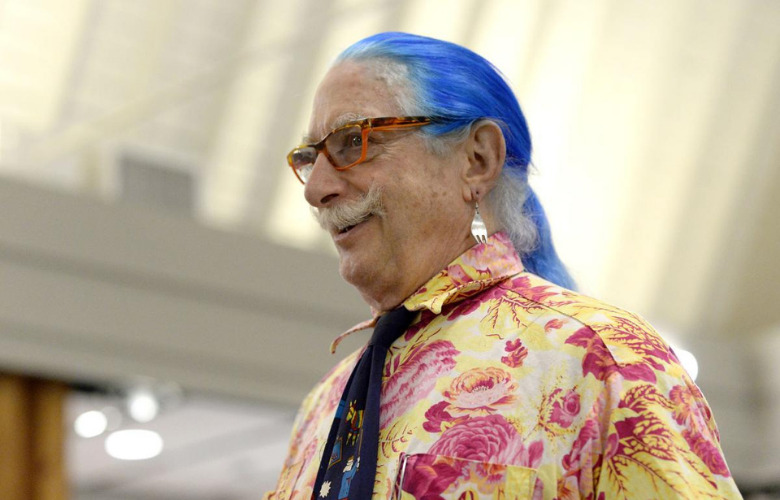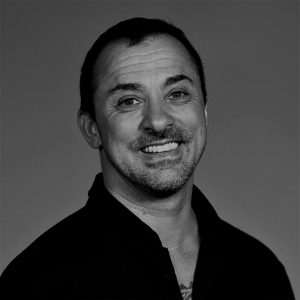
Looking more closely into socially engaged circus, and into Clowns in particular, there is one person who stands out. Many of you might be aware of him due to Robin Williams portraying him in a Hollywood movie in 1998: Patch Adams. A man who is best known for his work as a medical doctor and a clown. He is also a social activist who has devoted forty years to changing health care.
Hunter Doherty “Patch” Adams was born in Washington D.C. on May 28, 1945.
His father was a United States Army officer who fought in Korea. Patch and his brother grew up on army bases, outside the US during peacetime and stateside during wartime. They spent the last seven years with their father in Germany, where he was stationed and died in 1961. Patch was 16 years old at the time.
Patch says, “My father was so damaged by his war experiences that he couldn’t connect with me. I had no father. My mother, on the other hand, was remarkable. She loved us. She was a schoolteacher and fed me of all my interests. Gave me self-esteem and made me a creative, loving man who cared for people.”
After Patch’s father died, the family moved back to Virginia. Patch was placed in an all-white school where he was immediately confronted with the ugliness of segregation.
This came even more as a shock after growing up abroad up until then. Thus, having a much broader perspective and maturity than his classmates. Suddenly, Patch found himself in an environment he didn’t want to have to adapt to.
He got bullied a lot by his classmates for standing up against the racism around him. So much so that in his teens Patch tried to kill himself three times within one year.
But, as Patch says on his website, “Everything changed during the last hospitalization when I decided that instead of taking my life, I would make a (love) revolution. At 18, I found my desire to serve humanity through medicine and made the commitment to myself to never have another bad day. I decided to be happy. I left the hospital on fire and pursued a couple interests while working for my medical degree.”
Whilst working hard to become a medical doctor, Patch began his work as a clown in public as well. Something he has continued to do every day since.
It was important to Patch to become “an instrument for peace” as he calls it. To be able to be engaged for social justice and human rights, he knew it wouldn’t be enough to just want to be that person. It also meant he needed to work hard, become knowledgeable in a plethora of different subjects.
So, this was what he set out to do. He educated himself and studied everything he could get his hands on.
Because without a deeper understanding of our world, you cannot create solutions.
Patch thought of how healthcare could become a fundamental base of US society.
“I became interested in whole systems thinking. And looked for ways to integrate it with the hospital-community concepts that emerged in medical school. In my imagination, I envisioned a communal eco-village hospital that would address every problem of the way healthcare was delivered in one model. I wrote my vision up in a paper in March 1971. This was the basis of what became the Gesundheit Institute.”
Together with his wife Linda and a group of friends, Patch created the Gesundheit Institute. They operated for twelve years out of their communal home.
1) No charge
2) No health insurance reimbursement
3) No malpractice insurance
4) 3-to-4-hour initial interview with the patient
5) Home as hospital
6) Integration of all the healing arts
7) Integration of medicine with performance arts, arts and crafts, nature, agriculture, education, recreation, and social service
8) The health of the staff is as important as the health of the patient.
Patch, his group of friends, and their staff managed to keep the Institute running for twelve years.
However, their ideas were so radical, they could not find any funding. The staff themselves kept the Gesundheit Institute financially afloat.
Thus, in 1984, the group decided to go public, and Patch Adams began to tour the world as a speaker.
Patch says, “In the last 28 years, I’ve created 50 presentations and performed them in 70 countries. I’ve spoken at 90 medical schools in the US and many more around the world. Over the course of the last two decades, I’ve been on the road for 200-300 days of the year.”
In 1985, Patch Adams took a group of people on a clown trip to what was then the Soviet Union.
“Equipped with colorful clothing and compassion we visited hospitals, orphanages, homes for the elderly. We also just clowned on the street.”
Since then, these trips have become an integral part of Gesundheit’s global outreach.
Every year Gesundheit organizes clown trips to all corners of the world, including visits to war zones, refugee camps, and natural disaster sites.
Patch Adams’s Gesundheit Institute has also built clinics and a school at several of the places they’ve visited over the years.
To donate to this amazing organization, please click here.
… and more information on Wikipedia
Clowns Without Borders – Bringing Laughter to Where it is Needed
Clowns – a Brief Look Into their History and Mythology


Liam Klenk was born in Central Europe and has since lived on four continents. Liam has always been engaged in creative pursuits, ranging from photography and graphic design, to writing short stories and poetry, to working in theatre and shows. In 2016, Liam published his first book and memoir, 'Paralian'.
Read Full Profile© 2021 TheatreArtLife. All rights reserved.

Thank you so much for reading, but you have now reached your free article limit for this month.
Our contributors are currently writing more articles for you to enjoy.
To keep reading, all you have to do is become a subscriber and then you can read unlimited articles anytime.
Your investment will help us continue to ignite connections across the globe in live entertainment and build this community for industry professionals.